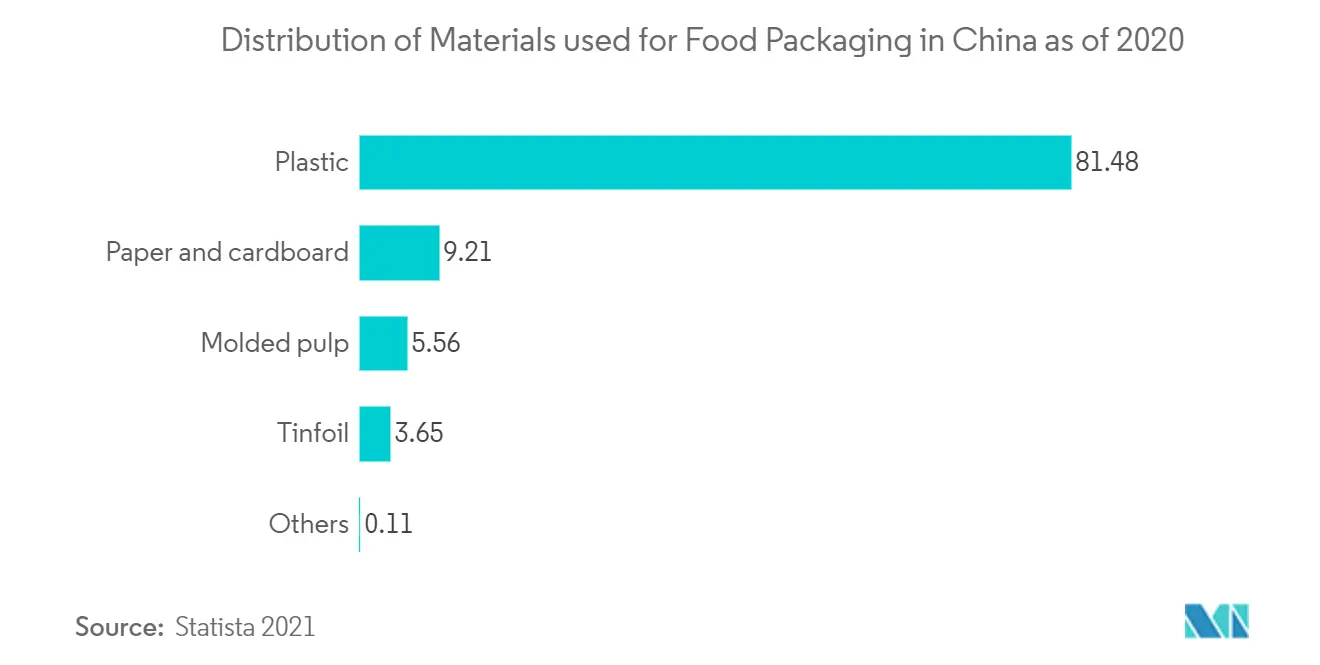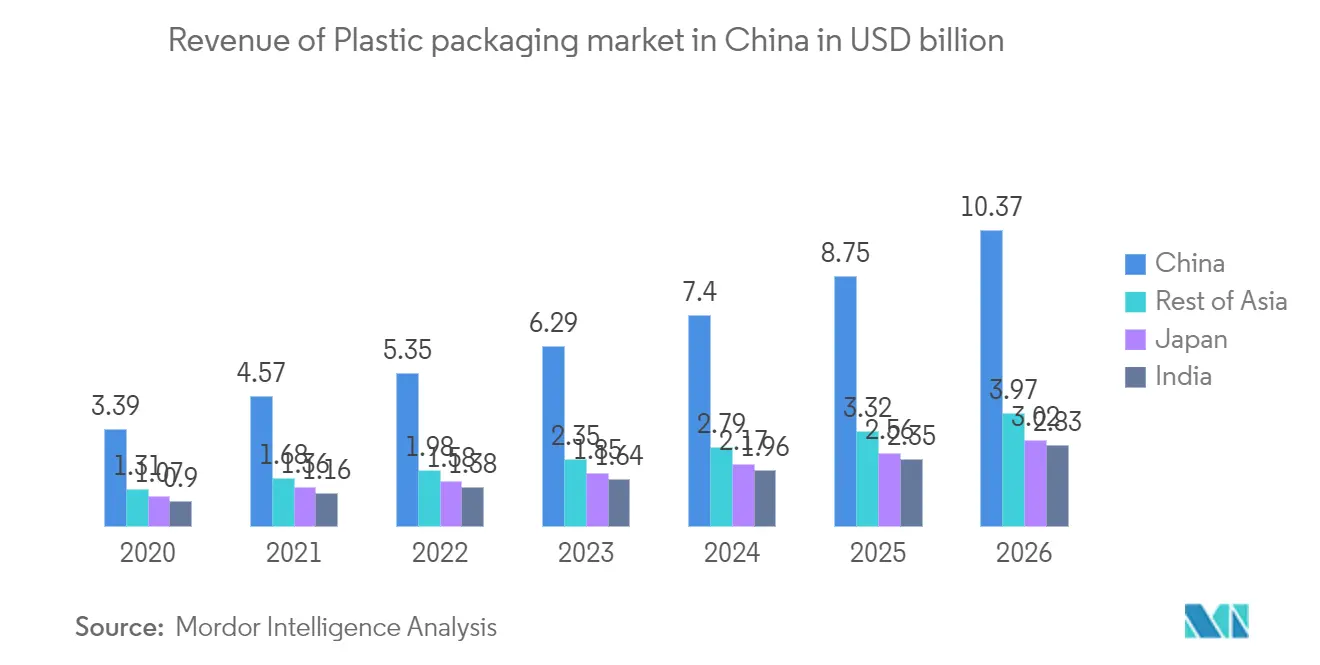Market Trends of APAC Baby Food Packaging Industry
This section covers the major market trends shaping the APAC Baby Food Packaging Market according to our research experts:
Plastic Pouches to occupy Major Share
- Pouches and bags are being predominantly deployed in the baby food industry, which serves many baby food products like powdered baby foods, liquid baby food, instant formula, baby cereals, dried baby food, etc., as they are one of the most cost-effective options. These are made either with several layers of aluminum, plastic, paper, or similar food-grade materials.
- Flexible packaging incorporating pouches uses fewer materials and energy to manufacture. When compared to glass bottles, the STANDCAP Pouch saves 62% on fossil fuels, 75% on greenhouse gas emissions, and 80% on water, according to Glenroy. The pouch also has a one-of-a-kind closure technology that helps prevent food waste by allowing for regulated dispensing and even product distribution, resulting in 99% product evacuation. Flexible packaging is facilitating firms to take an eco-friendlier strategy, resulting in less product and packaging waste.
- Furthermore, pouch films, also known as stand-up bags, are being widely used in the baby food packaging market. These bags are tough and durable, protecting the contents from physical and environmental risks while being transported from one area to another. Apart from these uses, one of the main reasons for their popularity is that they are quite inexpensive in comparison to their counterparts.
- Bags are being used for packaging across various applications baby food, pet food, health food, tea and coffee, and juice, among others. Bags offer a variety of benefits, including environmentally friendly, easily transported, bio-degradable, food waste reduction, and customizable, which is further propelling the growth of the market.

China to Hold the Largest Market Share
- In the Asia Pacific region, China is expected to have the highest share in the baby food packaging market, followed by Japan and India. The increasing awareness of consumers regarding the nutritional benefits of packaged baby food products is expected to drive the growth of the market.
- The food packaging boom in the country has compelled the packaging companies and resellers to explore sustainable packaging alternatives, including recycled plastics, among others. Such initiatives are likely to boost the baby food packaging market growth in the coming years.
- China is one of the major economies in the Asia Pacific Region. Growing disposable income in Asian countries has led to rising in the affordability of baby food products, which has resulted in improved quality food from an infant stage. The growth of the baby food/formula market is also being driven by the increasing number of migrants settling for employment purposes.
- Therefore, the number of women working outside the homes both in the high and low-income areas has also risen. Since working mothers return to their jobs shortly after giving birth, prepared baby foods and formulas, which can be instantly provided to the children, this is the main reason of the Asia Pacific Baby Food Packaging Market to grow as packaged products makes carrying and transportation convenient.
- In March 2021, JD Farm and Amcor collaborated to launch NFC-enabled flexible packaging. The NFC-enabled baby food packaging developed in collaboration with JD Farm leverages industry-leading technology to provide consumers with information on the quality, safety, and origin of JD Farm's products.

